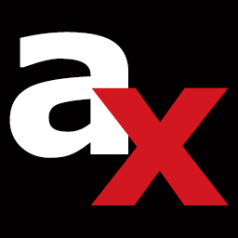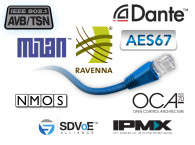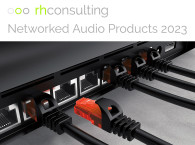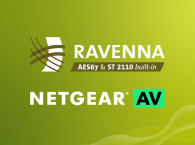
In the dynamic landscape of networked AV, the 12th installment of the report reveals a significant surge in overall adoption of networking solutions, with a total of 6,013 products from 602 brands. This comprehensive analysis, building on twelve years of audio research and three years of video data, sheds light on emerging trends and market dynamics.
"A milestone has been reached with over 6000 networked AV products on the market and with video-over-IP products numbering more than 1000," reflects Roland Hemming, Audio Consultant at RH Consulting. "Networked media products are steadily becoming part of everyone’s work. Soon it will be easier to count the remaining analogue products!"
The research confirms that Dante, the leading audio networking technology, has experienced remarkable growth over the past 12 months, showcasing an 11% expansion in audio products. With 4,131 products, Dante outpaced all other protocols combined, introducing 420 new products and involving 45 manufacturers for the first time.

Ravenna, showing steady growth across the year, secured the second-highest increase in audio products with 344 offerings. MILAN and AVB also demonstrated growth, with MILAN-compliant products increasing to 45. Note that whilst MILAN products are supposed to be compatible with each other, almost no other AVB products have interoperability, they simply use the same underlying (AVB) technology.
Video or AV
In the video-over-IP realm, the market is still maturing compared to networked audio. The report analyses protocols such as NDI, SDVoE, ST 2110, Dante AV, IPMX and AVB, revealing insights into their adoption and maturity.

SDVoE, despite a small decline, maintained a significant presence with 364 products. IPMX 'ready' products, totaling seven offerings, indicate potential growth upon full protocol release.
As the market matures, major players are yet to fully embrace video-over-IP standards, raising questions about the industry's future direction. The report invites stakeholders to consider the evolving landscape and adapt to emerging trends in networked AV technology.
“We now have three years of data for video products so we can start to draw a line,” concludes Hemming. “Other than overall growth, we still can’t identify a ‘winner’ for AV-over-IP. “Several major video manufacturers are still using proprietary technology - is it time for them to jump off the fence and commit to offering real interoperability?”
For a full breakdown of all the statistics and a comprehensive listing of all the protocols considered and how the data is compiled,
view the full report here.
www.rhconsulting.uk






